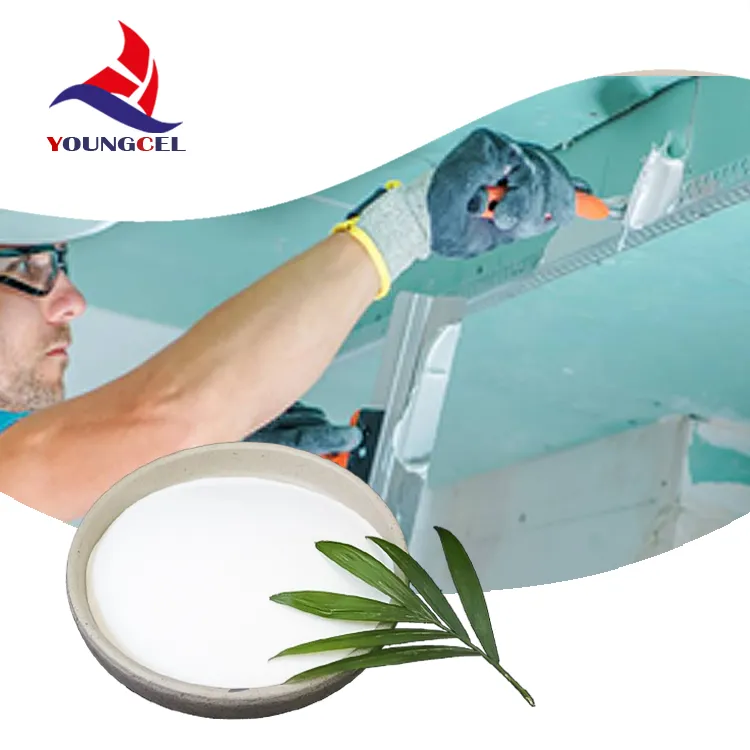Understanding the Role of HPMC in Chemical Adhesives
Hydroxypropyl methylcellulose (HPMC) is a versatile polymer widely used in various applications, particularly in the formulation of chemical adhesives. As a cellulose ether, HPMC stands out for its unique properties that enhance the performance of adhesives in diverse industrial applications. This article delves into the significance of HPMC in chemical adhesive formulations, exploring its characteristics, benefits, and applications.
What is HPMC?
HPMC is derived from cellulose, a natural polymer found in plant cell walls. The modification of cellulose through hydroxypropyl and methyl substitution gives HPMC its distinct properties, making it soluble in water and forming a clear, viscous solution. This water-soluble polymer is biodegradable and has a low toxicity profile, which makes it an environmentally friendly choice for various applications, including coatings, pharmaceutical formulations, and, notably, chemical adhesives.
Properties of HPMC
One of the key characteristics of HPMC is its ability to improve the viscosity and consistency of adhesive formulations. By controlling the rheological properties, HPMC ensures that the adhesive maintains its thickness, reducing the risk of drips and running. This property is essential for applications requiring precision in adhesive application. Moreover, HPMC enhances the workability of adhesives, allowing for easier spreading and better adhesion on various surfaces.
HPMC also acts as a film-forming agent. When the adhesive dries, HPMC contributes to the formation of a strong, flexible film that adheres to surfaces while retaining elasticity. This quality is particularly beneficial in applications where movement or expansion is expected, as it helps prevent cracking and peeling of the adhesive layer.
Benefits of Using HPMC in Chemical Adhesives
1. Enhanced Performance HPMC significantly improves the overall performance of chemical adhesives. It increases the bond strength, making it suitable for demanding applications, such as construction and automotive industries.
chemic adhes hpmc

2. Thermal Stability HPMC is thermally stable, which allows it to maintain its properties even at elevated temperatures. This feature is crucial for adhesives used in high-temperature environments, ensuring durability and longevity.
3. Compatibility HPMC is compatible with a wide range of additives and other polymers. This compatibility allows formulators to create customized adhesive solutions tailored to specific needs without compromising performance.
4. Regulatory Compliance As a non-toxic and biodegradable polymer, HPMC adheres to environmental regulations and safety standards, making it an attractive choice for manufacturers looking to produce eco-friendly adhesives.
Applications of HPMC in Chemical Adhesives
The versatility of HPMC makes it suitable for various adhesive applications. One of the primary uses is in construction adhesives, where it is incorporated into tile adhesives, cement-based products, and drywall compounds. The water retention properties of HPMC ensure that these adhesives maintain their workability and bond strength during the application process.
In the woodworking industry, HPMC is used in PVA (polyvinyl acetate) adhesives, enhancing adhesion to wood surfaces. The flexibility imparted by HPMC reduces the risk of joint failure, making it ideal for both structural and non-structural applications.
Moreover, HPMC finds its place in packaging adhesives due to its strong bonding capabilities and stability, which are critical for ensuring the integrity of packages during transport and storage.
Conclusion
Hydroxypropyl methylcellulose (HPMC) plays a pivotal role in the formulation of chemical adhesives, providing a range of benefits that enhance their performance and application versatility. Its properties, including improved viscosity, film formation, thermal stability, and compatibility with other additives, make it an essential component in many adhesive formulations. With the growing demand for eco-friendly materials, HPMC's biodegradable nature positions it as a preferred choice in the development of modern, sustainable chemical adhesives. As industries continue to innovate, the utilization of HPMC in adhesives is likely to expand, leading to even more advanced formulations tailored to meet specific application needs.
-
Rdp Powder: Key Considerations for Wholesalers in the Building Materials IndustryNewsJul.08,2025
-
Key Considerations for Wholesalers: Navigating the World of Hpmc - Based ProductsNewsJul.08,2025
-
Hpmc Detergent: Key Considerations for WholesalersNewsJul.08,2025
-
Key Considerations for Wholesalers: China Hpmc For Tile Adhesive, Coating Additives, Concrete Additives, and MoreNewsJul.08,2025
-
Crucial Considerations for Wholesalers: Navigating the World of Construction MaterialsNewsJul.08,2025
-
Key Considerations for Wholesalers Sourcing Additive For Cement, Additive For Concrete, Additive For Putty from Additive Manufacturer Shijiazhuang Gaocheng District Yongfeng Cellulose Co., Ltd.NewsJul.08,2025




